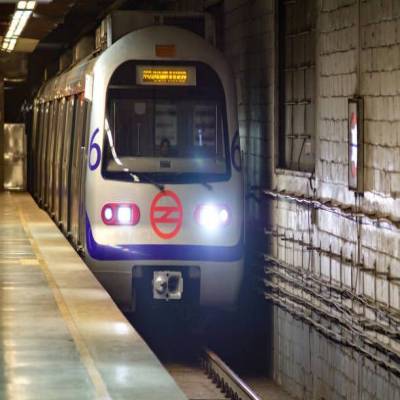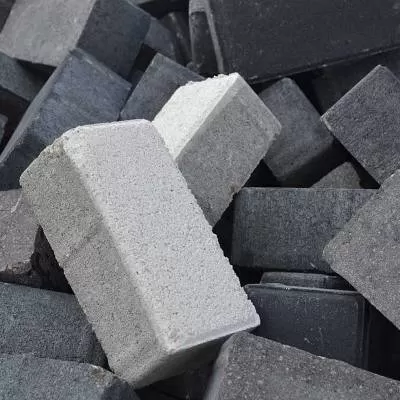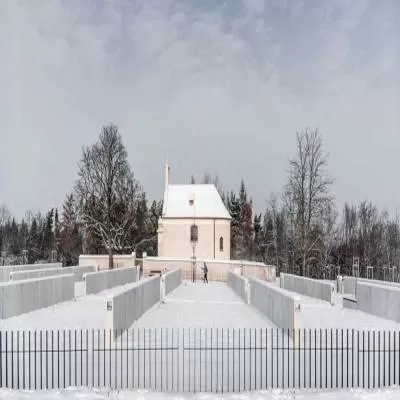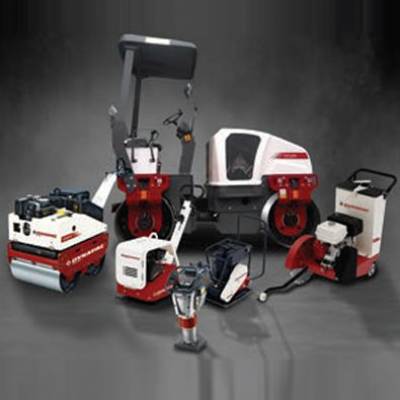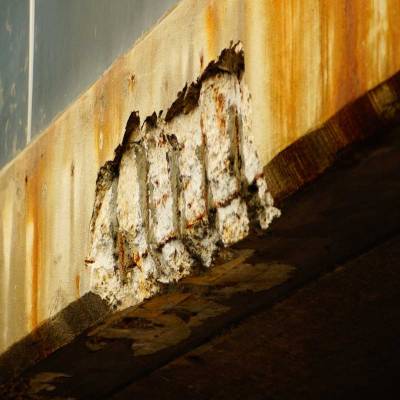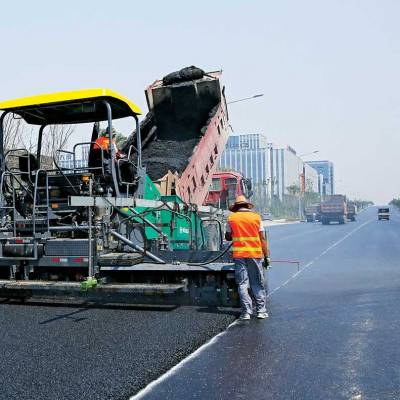- Home
- Building Material
- Concrete
- Finding his Niche
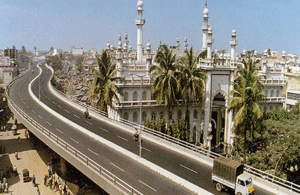
Finding his Niche
It is said that destiny is not a matter of chance, but choice. Well, Basil Manoj really had no choice when it came to his mTtier! While he originally wished to pursue a diploma in electronics engineering, civil engineering went on to become his calling. Today, with 19 years of experience in the construction and supervision of major bridges, flyovers and urban viaducts constructed with innovative design and advanced technology, Manoj is Manager (Civil) with L&T Metro Rail (Hyderabad) Ltd. "My family was against my decision to opt for civil engineering as it was not considered a profession of repute back then," he recalls. "But I came to realise that it was one subject to explore." Finding the right job also took time. He started his career with Dar Consultants as an AutoCAD Operator for two years. He was further transferred to an on-site job to monitor the pre-casting of concrete when the company bagged the JJ Flyover project in Mumbai. While Manoj was in charge of the erection and foundation works, he came to realise where he should be heading to. "Dar Consultants was among the first to introduce the precast segmental construction technology in India, and as a budding engineer, understanding the details was a big challenge," he confesses. Another challenging project was the Bandra-Worli Sea Link. "Understanding the technology in detail and ensuring it was implemented was no cakewalk," he reveals. In conversation with CW, he shares more about his projects, technology and the construction industry.
- The change wave: Advanced construction techniques and methods have taken over the industry in recent years to suit the requirement of turnkey projects. Also, contractors have started opting for economical designs and convenient construction techniques as the mission is to reduce time and cost. For instance, precast technology can save construction time as compared to the conventional cast in-situ technique, as seen in bridge construction.
- Existing scenario: The construction industry is facing a tough time owing to fewer projects in hand, leading to poor turnover. While many companies are debt-ridden and have not been able to continue with projects in hand, others are quoting less than the estimated price to acquire projects even though the profit is nil. So, what is the role of a civil engineer here? Civil engineers have to face the ups and downs of the industry from time to time. That said, out-of-the-box thinking and dedication can bring in innovation, which can prove beneficial for the organisation's growth.
- Removing concrete through 'hydrodemolition': In some cases, during the process of construction, demolition work is required to overcome the construction errors or deficiencies.Here, hydrodemolition, a concrete-removing technique conducted with specialised equipment and experienced operators, can help. The equipment is not manufactured in India and needs to be imported. During the Bandra-Worli Sea Link project, we came across a situation where the post-tensioning duct embedded in the pier got chocked with concrete. To clear the duct and remove the blockage, we undertook high-pressure water jetting. Also, in the cable-stayed bridge across Chambal River, we had to dismantle a defective portion of the concrete structure without causing any damage to the reinforcement steel; again, the best option was hydrodemolition.
- Strength of steel: The Bandra-Worli Sea Link consists of two cable-stayed bridges and approach bridges in both carriageways. The main component of the cable is steel with high tensile strength. The entire load of the cable-stayed bridge has been carried by the cable, which is then transferred to the concrete pylon with reinforcement steel and steel anchorages. Similarly, the approach bridges have been constructed using the precast segmental construction technique where the main component is high tensile strand. This holds the entire bridge deck by post-tensioning system. Apart from the above, components like bridge bearing, expansion joints, metal crash barriers and anchorages are all made of steel.
- Ensuring durability and longevity: Concrete is normally porous, which allows water to penetrate inside the structure causing corrosion to the reinforcement steel. To reduce porosity and increase durability, materials like fly-ash or microsilica are added during the production of concrete. Also, concrete bridge decks tend to crack owing to creep and shrinkage of concrete, thereby allowing water to percolate inside, leading to corrosion of reinforcement steel and post-tensioning strands. To avoid this, waterproofing membrane is applied on the entire bridge deck area and wearing course laid over it. Further, to protect exposed concrete structures from the environment, barrier-coating should be done on exposed surfaces. These technologies have been used in projects like the Sirsi Circle Flyover in Bengaluru and JJ Flyover and Bandra-Worli Sea Link in Mumbai.
- The metro job: L&T Metro, which I am currently associated with, is a BOT project. While L&T Hyderabad Metro is the concessionaire, the construction work has been awarded to L&T Construction. The project is being developed in three corridors of about 25 km each. At present, the construction is going on in all corridors. The third corridor is being constructed in three stages of which one will be opened by next year. I am looking after the viaduct, which is the bridge section starting from the foundation to the final structure.
- Need for reform: This is a vast field with many divisions like roads, bridges, railways, airports, dams, buildings, industrial structures and public health structures. Bifurcation in civil engineering will help one select and specialise in a particular field. At the academic level, the curriculum needs to be revised to include case studies of large projects featuring innovative design and advanced technology. There should also be practical training on the construction of complex structures and design tools. Also, budding engineers need to initially consider projects with a learning value rather than pure monetary gain.
Track record
ACADEMIC
- Diploma in Civil Engineering, Government Polytechnic, Coimbatore 1992
- Bachelor of Engineering (Civil), University of Madras, 1997
- Postgraduate Diploma in Design and Construction of Concrete Structures, Annamalai University, 1999
PROFESSIONAL
- 1997-2010 : Dar Consultants (India) Pvt Ltd with Dar Al-handasah Consultants (Shair & Partners); Joined as a CAD Operator and went up to the post of Resident Engineer; was involved in the following projects:
- Bandra-Worli Sea Link, Mumbai
- Flyover from JJ Hospital to Palton Road, Mumbai
- Proposed flyover from Haji Ali to Wilson College via Peddar Road, Mumbai
- Flyovers at University Circle and Agriculture College, Pune
- Second Narmada Bridge, Gujarat
- Sirsi Circle Flyover, Bengaluru
- 2010-2013 : Gammon India Ltd as Manager for the cable-stayed bridge project across Chambal River, Rajasthan
- 2013 onwards : L&T Metro Rail (Hyderabad) Ltd as Manager for the Hyderabad Metro Rail
Challenge zone
Project 1
Project: Flyover from JJ Hospital to Palton Road, Mumbai
Period: 1999-2002
Cost: Rs 60 crore
Client: Maharashtra State Road Development Corporation
Features: The flyover starts adjacent to JJ Hospital and proceeds along Mohammed Ali Road to Palton Road. It is 2.4 km long with a dual carriageway of 16.2 m width with a span of 34.5 m. The bridge deck consists of a central spine and cantilever segments on either side to form the carriageway. The precast spine segments were cast by long line method and erected by using an under slung launching girder. The precast cantilever segments were erected using an overhead hanger system and stitched to the spine segment.
Background: This stretch forms an important arterial road in Mumbai and is one of the busiest traffic corridors of South Mumbai. Hence, to ease traffic congestion and reduce commuting time, this flyover was proposed. It also aimed to eliminate traffic signals and save fuel and vehicle operating costs.
Challenges: The first challenge was to construct the flyover with minimum hindrance to traffic. As the foundations were to be constructed only at the median, the types of underground utilities that would be encountered were not known.
Solution: Most of the bridge structures were precast and brought to site and erected in place at night. Before starting the construction work, utility probing was done by excavating trial pits at the location of piers. The costs for shifting utilities were paid in advance to the concerned departments, which helped in speedy action at affected locations.
PROJECT 2
Project: Bandra-Worli Sea Link Project (Package-IV), Mumbai
Period: 2001-2010
Cost: Rs 850 crore
Client: Maharashtra State Road Development Corporation
Features: The 5.6-km long sea link consists of a twin, four-lane deck linking Worli and Bandra across Mahim Bay. It consists of approach bridges, cable stay bridges, toll plaza, control building, link bridge and approach road. The bridge consists of precast deck segments cast by short line method and has been erected using overhead launching truss or derrick.
The cable-stayed bridges provide for a 500-m main span with a single support tower of 125 m high at Bandra, and a 150-m span conventional, twin-tower, cable-stayed bridge at Worli.
Background: To commute from Bandra to Worli during peak hours through the existing road, one encounters 23 signals; it takes about 40 minute with an average journey speed of 13 km per hour. To reduce commuting time, save fuel and reduce air, noise and sound pollution, an alternative corridor was proposed. The sea link was one of the most highly recommended links by transport studies conducted for the metropolitan region as it saves time and reduces the traffic on existing roads, thereby reducing the level of pollution.
Challenges: The bridge alignment was in the shallow waters of Mahim Bay and the movement of marine equipment to do the foundations was a challenging job. Also, transporting men and materials to different locations in the open, rough sea was difficult. The pylons of the cable-stayed bridge have a unique shape with varying geometry throughout its height of 128 m; the construction of this within tolerance was a great challenge. At one point of time, after completion of the erection at one end of the approach bridge, the 1,200-mt launching truss had to be shifted to the other location to proceed with the erection work.
Solution: Tidal variation was used to move the marine equipment to carry out foundation works at different locations.
Barge-mounted millers were used to transport concrete to the designated locations. Specially designed self-climbing formwork was imported from Austria and used to construct the pylons. Also, a high-capacity floating crane of 1,600 mt capacity was hired from Singapore to shift the entire launching truss from one end to the other without dismantling. The normal method of dismantling the launching truss, transporting it to a new location and erecting it again would have consumed a minimum of three months.
In a series of interviews with prominent civil engineers, Basil Manoj, Manager (Civil), L&T Metro Rail (Hyderabad) Ltd shares his experience of constructing flyovers through innovative technologies. It is said that destiny is not a matter of chance, but choice. Well, Basil Manoj really had no choice when it came to his mTtier! While he originally wished to pursue a diploma in electronics engineering, civil engineering went on to become his calling. Today, with 19 years of experience in the construction and supervision of major bridges, flyovers and urban viaducts constructed with innovative design and advanced technology, Manoj is Manager (Civil) with L&T Metro Rail (Hyderabad) Ltd. "My family was against my decision to opt for civil engineering as it was not considered a profession of repute back then," he recalls. "But I came to realise that it was one subject to explore." Finding the right job also took time. He started his career with Dar Consultants as an AutoCAD Operator for two years. He was further transferred to an on-site job to monitor the pre-casting of concrete when the company bagged the JJ Flyover project in Mumbai. While Manoj was in charge of the erection and foundation works, he came to realise where he should be heading to. "Dar Consultants was among the first to introduce the precast segmental construction technology in India, and as a budding engineer, understanding the details was a big challenge," he confesses. Another challenging project was the Bandra-Worli Sea Link. "Understanding the technology in detail and ensuring it was implemented was no cakewalk," he reveals. In conversation with CW, he shares more about his projects, technology and the construction industry. The change wave: Advanced construction techniques and methods have taken over the industry in recent years to suit the requirement of turnkey projects. Also, contractors have started opting for economical designs and convenient construction techniques as the mission is to reduce time and cost. For instance, precast technology can save construction time as compared to the conventional cast in-situ technique, as seen in bridge construction. Existing scenario: The construction industry is facing a tough time owing to fewer projects in hand, leading to poor turnover. While many companies are debt-ridden and have not been able to continue with projects in hand, others are quoting less than the estimated price to acquire projects even though the profit is nil. So, what is the role of a civil engineer here? Civil engineers have to face the ups and downs of the industry from time to time. That said, out-of-the-box thinking and dedication can bring in innovation, which can prove beneficial for the organisation's growth. Removing concrete through 'hydrodemolition': In some cases, during the process of construction, demolition work is required to overcome the construction errors or deficiencies.Here, hydrodemolition, a concrete-removing technique conducted with specialised equipment and experienced operators, can help. The equipment is not manufactured in India and needs to be imported. During the Bandra-Worli Sea Link project, we came across a situation where the post-tensioning duct embedded in the pier got chocked with concrete. To clear the duct and remove the blockage, we undertook high-pressure water jetting. Also, in the cable-stayed bridge across Chambal River, we had to dismantle a defective portion of the concrete structure without causing any damage to the reinforcement steel; again, the best option was hydrodemolition. Strength of steel: The Bandra-Worli Sea Link consists of two cable-stayed bridges and approach bridges in both carriageways. The main component of the cable is steel with high tensile strength. The entire load of the cable-stayed bridge has been carried by the cable, which is then transferred to the concrete pylon with reinforcement steel and steel anchorages. Similarly, the approach bridges have been constructed using the precast segmental construction technique where the main component is high tensile strand. This holds the entire bridge deck by post-tensioning system. Apart from the above, components like bridge bearing, expansion joints, metal crash barriers and anchorages are all made of steel. Ensuring durability and longevity: Concrete is normally porous, which allows water to penetrate inside the structure causing corrosion to the reinforcement steel. To reduce porosity and increase durability, materials like fly-ash or microsilica are added during the production of concrete. Also, concrete bridge decks tend to crack owing to creep and shrinkage of concrete, thereby allowing water to percolate inside, leading to corrosion of reinforcement steel and post-tensioning strands. To avoid this, waterproofing membrane is applied on the entire bridge deck area and wearing course laid over it. Further, to protect exposed concrete structures from the environment, barrier-coating should be done on exposed surfaces. These technologies have been used in projects like the Sirsi Circle Flyover in Bengaluru and JJ Flyover and Bandra-Worli Sea Link in Mumbai. The metro job: L&T Metro, which I am currently associated with, is a BOT project. While L&T Hyderabad Metro is the concessionaire, the construction work has been awarded to L&T Construction. The project is being developed in three corridors of about 25 km each. At present, the construction is going on in all corridors. The third corridor is being constructed in three stages of which one will be opened by next year. I am looking after the viaduct, which is the bridge section starting from the foundation to the final structure. Need for reform: This is a vast field with many divisions like roads, bridges, railways, airports, dams, buildings, industrial structures and public health structures. Bifurcation in civil engineering will help one select and specialise in a particular field. At the academic level, the curriculum needs to be revised to include case studies of large projects featuring innovative design and advanced technology. There should also be practical training on the construction of complex structures and design tools. Also, budding engineers need to initially consider projects with a learning value rather than pure monetary gain. Track record ACADEMIC Diploma in Civil Engineering, Government Polytechnic, Coimbatore 1992 Bachelor of Engineering (Civil), University of Madras, 1997 Postgraduate Diploma in Design and Construction of Concrete Structures, Annamalai University, 1999 PROFESSIONAL 1997-2010 : Dar Consultants (India) Pvt Ltd with Dar Al-handasah Consultants (Shair & Partners); Joined as a CAD Operator and went up to the post of Resident Engineer; was involved in the following projects: Bandra-Worli Sea Link, Mumbai Flyover from JJ Hospital to Palton Road, Mumbai Proposed flyover from Haji Ali to Wilson College via Peddar Road, Mumbai Flyovers at University Circle and Agriculture College, Pune Second Narmada Bridge, Gujarat Sirsi Circle Flyover, Bengaluru 2010-2013 : Gammon India Ltd as Manager for the cable-stayed bridge project across Chambal River, Rajasthan 2013 onwards : L&T Metro Rail (Hyderabad) Ltd as Manager for the Hyderabad Metro Rail Challenge zone Project 1 Project: Flyover from JJ Hospital to Palton Road, Mumbai Period: 1999-2002 Cost: Rs 60 crore Client: Maharashtra State Road Development Corporation Features: The flyover starts adjacent to JJ Hospital and proceeds along Mohammed Ali Road to Palton Road. It is 2.4 km long with a dual carriageway of 16.2 m width with a span of 34.5 m. The bridge deck consists of a central spine and cantilever segments on either side to form the carriageway. The precast spine segments were cast by long line method and erected by using an under slung launching girder. The precast cantilever segments were erected using an overhead hanger system and stitched to the spine segment. Background: This stretch forms an important arterial road in Mumbai and is one of the busiest traffic corridors of South Mumbai. Hence, to ease traffic congestion and reduce commuting time, this flyover was proposed. It also aimed to eliminate traffic signals and save fuel and vehicle operating costs. Challenges: The first challenge was to construct the flyover with minimum hindrance to traffic. As the foundations were to be constructed only at the median, the types of underground utilities that would be encountered were not known. Solution: Most of the bridge structures were precast and brought to site and erected in place at night. Before starting the construction work, utility probing was done by excavating trial pits at the location of piers. The costs for shifting utilities were paid in advance to the concerned departments, which helped in speedy action at affected locations. PROJECT 2 Project: Bandra-Worli Sea Link Project (Package-IV), Mumbai Period: 2001-2010 Cost: Rs 850 crore Client: Maharashtra State Road Development Corporation Features: The 5.6-km long sea link consists of a twin, four-lane deck linking Worli and Bandra across Mahim Bay. It consists of approach bridges, cable stay bridges, toll plaza, control building, link bridge and approach road. The bridge consists of precast deck segments cast by short line method and has been erected using overhead launching truss or derrick. The cable-stayed bridges provide for a 500-m main span with a single support tower of 125 m high at Bandra, and a 150-m span conventional, twin-tower, cable-stayed bridge at Worli. Background: To commute from Bandra to Worli during peak hours through the existing road, one encounters 23 signals; it takes about 40 minute with an average journey speed of 13 km per hour. To reduce commuting time, save fuel and reduce air, noise and sound pollution, an alternative corridor was proposed. The sea link was one of the most highly recommended links by transport studies conducted for the metropolitan region as it saves time and reduces the traffic on existing roads, thereby reducing the level of pollution. Challenges: The bridge alignment was in the shallow waters of Mahim Bay and the movement of marine equipment to do the foundations was a challenging job. Also, transporting men and materials to different locations in the open, rough sea was difficult. The pylons of the cable-stayed bridge have a unique shape with varying geometry throughout its height of 128 m; the construction of this within tolerance was a great challenge. At one point of time, after completion of the erection at one end of the approach bridge, the 1,200-mt launching truss had to be shifted to the other location to proceed with the erection work. Solution: Tidal variation was used to move the marine equipment to carry out foundation works at different locations. Barge-mounted millers were used to transport concrete to the designated locations. Specially designed self-climbing formwork was imported from Austria and used to construct the pylons. Also, a high-capacity floating crane of 1,600 mt capacity was hired from Singapore to shift the entire launching truss from one end to the other without dismantling. The normal method of dismantling the launching truss, transporting it to a new location and erecting it again would have consumed a minimum of three months.



